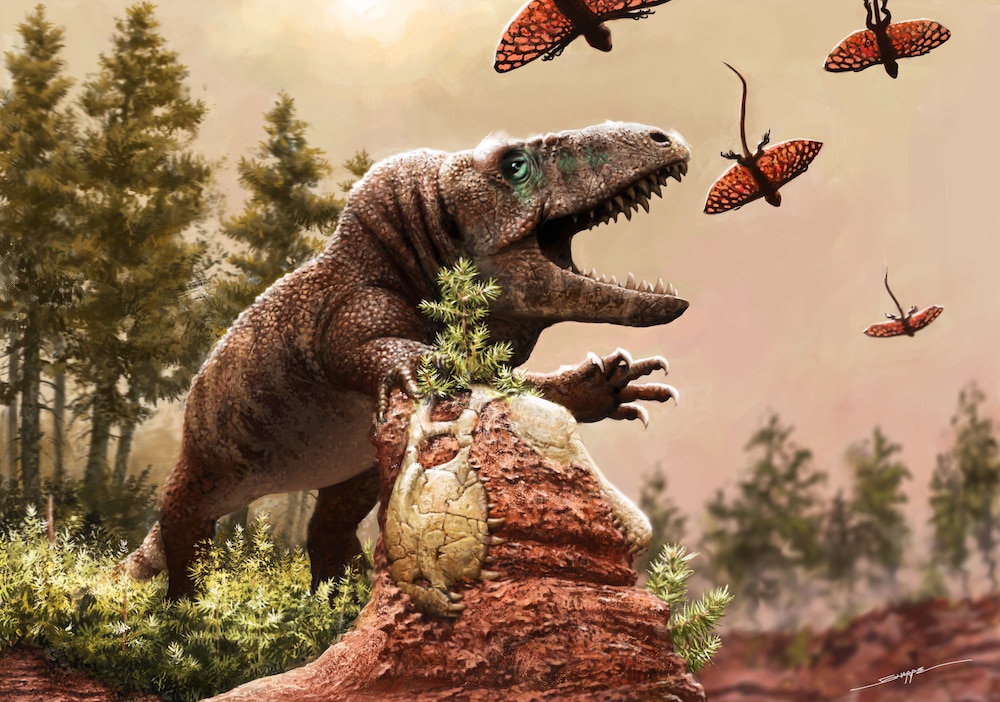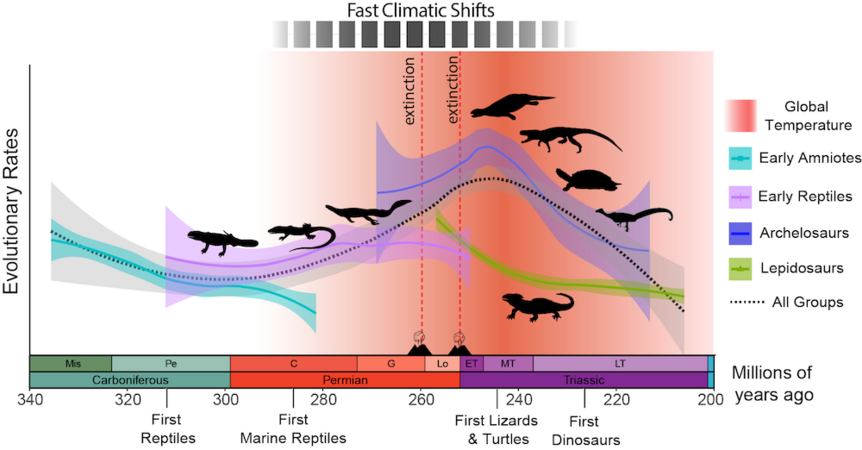Create a free profile to get unlimited access to exclusive videos, sweepstakes, and more!
Some 290 million years ago, climate change caused an explosion of reptiles
Has anyone checked the Earth's thermostat lately? No reason.

The beginning of The Land Before Time sees our dinosaurian — and one pterosaur — cast of characters enduring a climatic shift which drives them away from their current home and toward the Great Valley. Similar environmental changes were not unusual during prehistory. Mass extinction events have occurred at least five times throughout our planet’s history, and while the most famous one was the result of an asteroid impact, more often than not they’re the consequence of dramatic climate shifts.
While these events were devastating for huge portions of the existing species, they also presented an opportunity for those which survived. Clearing out competitors and reducing predators opened up niches which were previously occupied, allowing the process of evolution to spin off in new directions.
Tracing the branches of the tree of life back to its major breaking points illustrates the way in which certain groups of animals have taken advantage of these environmental disasters to their benefit. Mammals certainly benefited from the Cretaceous-Paleogene extinction 66 million years ago, at least once the dust settled. Before that, however, reptiles ruled the Earth, and the story of their success is a little more complicated.
Tiago R. Simões from the Museum of Comparative Zoology and department of Organismic and Evolutionary Biology at Harvard University, and colleagues, studied the fossilized remains of hundreds of species across 23 reptile groups to reconstruct their historical diversification. While the Permian-Triassic extinctions played a role in their evolutionary explosion, new research suggests they were already on the rise when it occurred, buoyed by rising global temperatures. The results of the study were published in the journal Science Advances.
“At the end of the Permian, roughly 252 million years ago, there was a massive eruption which happened in what is now Siberia. It was a huge, continuous flow of lava which released huge amounts of greenhouse gases into the atmosphere and lasted almost 400,000 years. It created a cascade effect which released even more greenhouse gases like methane from the deep ocean and raised the temperature,” Simões told SYFY WIRE.
Simões and colleagues spent eight years visiting museum collections in countries all over the world, collecting data. They took pictures and CT scans, looking at hundreds of different morphological variables to build a phylogenetic tree tracing the reptile story back more than 300 million years.
They expected drastic changes in climate as a consequence of the volcanic extinction event and a corresponding radiation of speciation, but they were surprised to see that rapid expansion of reptile species began considerably earlier than anticipated.
“People were usually concentrating their attention on the Permian-Triassic border because that’s when you get the greatest volcanic activity and rising temperatures. Indeed, that’s when we see the highest rates of change in reptiles, but the whole thing actually starts several million years before that,” Simões said.
As the temperatures rose, rates of desertification increased along with higher levels of forest wildfires. All over the world, environments were changing, and species were left to adapt or die. Reptiles, it seems, took the challenge to heart. The fossil record paints a picture of rising temperatures giving reptiles a kind of evolutionary head start in advance of the mass extinction events looming on the horizon. The increased diversification meant that when the extinctions did happen, they were primed to fill in many of the newly available niches.
“As you have mass extinctions happening at the end of the Permian a huge number of avenues of ecological opportunity open up for the surviving species. They can explore resources that were previously unavailable to them,” Simões said.
Over the course of about 60 million years, between 290 and 230 million years ago, nearly all major groups of reptiles were evolving at rates considerably higher than the background rate. At its peak, right after the Permian extinctions, researchers estimate that the rate of evolution in reptiles was roughly three times higher than typical.
“It wasn’t just one group or one part of their bodies that changed. We tested different regions of their bodies across 23 different groups of reptiles and essentially all of them responded similarly. They changed at different rates, but all increased their rates of evolution, corresponding to the line of temperature change,” Simões said.
Understanding how prehistoric animals responded to dramatic climate shifts provides a road map for our own time. While these environmental shifts occur on timescales much larger than a human lifetime, they illustrate how readily climatic shifts shakeup the ecological landscape. Preventing or mitigating these kinds of climatic shifts are probably in our best interests. Every time you see a lizard, it’s evidence of the fact that when the times start changing, you either change with them or you die.



























